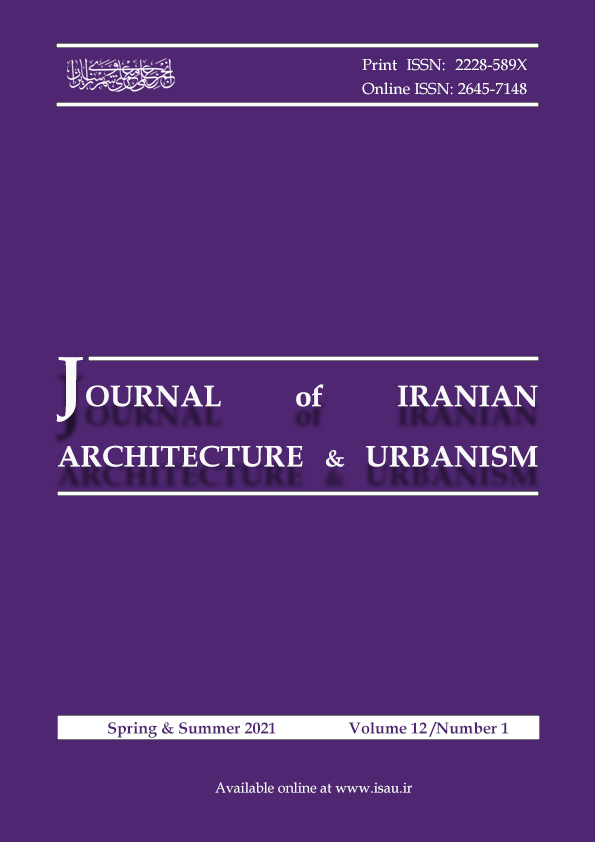Document Type : Original Research Paper
Authors
1 M.A. in Architecture, Department of Architecture, Safadasht Branch, Islamic Azad University, Safadasht, Iran.
2 Assistant Professor, Department of Architecture, Damavand Branch, Islamic Azad University, Damavand, Iran.
Abstract
ExtendedAbstract
Background and Objectives: Multiple Sclerosis (MS) disease is a mental and physical illness related to environmental conditions. The environmental factors are effective in the development or prevention of the disease. MS is a complex disease featuring a vast spectrum of signs adversely influencing the patients’ abilities to perform daily routine activities. The problems of MS patients include physical and psychological aspects. Due to the high rates of the disease, the special condition of MS patients, and the lack of specific rehabilitation centers for patients, it is important to pay attention to proper environmental design to improve their mental health. The purpose of this research is to design a rehabilitation center that is appropriate to the mental and emotional conditions of MS patients. Designing a space for MS patients by considering environmental and architectural factors and the proper use of these factors can reduce symptoms (stress, fatigue, depression, and motor disorder). However, the problem currently lies in the idea that no study has attended to the role and the importance of environmental factors parallel to reducing MS symptoms. The environments designed for these patients do not feature a single difference from those designed for the others, healthy or sick. No environment has been designed proportionate to the psychological and physical status and situation of these patients.
Methods:In the present study, a descriptive method was employed in the first stage, and the information was collected via reviewing the credible articles and books on relevant subjects. Considering the fact that many psychologists and psychiatrists deal with MS patients whose psychological conditions have worsened following the development of multiple sclerosis and the subsequent physical and movement disorders, qualitative methods are used in the following sections. Psychiatrists and psychologists working with MS patients’ treatment and healthcare centers and MS Patients Association and Rehabilitation Centers have been interviewd, and the information obtained from the content analysis has been used to identify their problems and needs. In line with this, 30 psychiatrists and psychologists were randomly selected from various centers as the study sample to be interviewed. After investigating the interviews using content analysis, the common points of the literature review and psychologists’ ideas were collected. In the present study, the effective environmental factors, including sunlight, color, music, gathering spaces, open spaces and nature, fitting spaces, sport, hydrotherapy, and rehabilitation facilities, were investigated. The importance of the points underlined by the psychologists was also verified.
Findings: Sports therapy is a treatment specific to MS patients, and, besides improving MS patients’ physical situation, it can improve their psychological and mental health. Therefore, it is better to design a compound and consider spaces for playing sports and walking to improve the physical and psychological health of MS patients. Hydrotherapy, as a nonmedicinal treatment method, can increase the flexibility of the muscles and bones, thereby mitigating the muscular spasms and enhancing the vigor and stamina of an individual, and reduce their pain. The sunlight has a positive effect on the psyche and mind of the patients when their declined bodies crave comfort. Moreover, the appropriate use of natural light during the day better helps energy productivity. So, the proper design of the windows (dimensions, forms, and orientations) can provide the highest rate of sunlight gain. Considering the positive effects that color has on humans’ lives, the proper and pertinent use of colors and their correct application can cause positive effects on the psychological status of the patients. Considering the psychological and physical problems of MS patients and their need for conversation and confabulation for soothing their pains, the architects and designers should consider spaces for their gathering and social interaction inside and outside the healthcare and treatment centers of MS patients. According to the materials above and considering the problems of MS patients, including stress, depression, fatigue, imbalance, and movement disorders, the architects and designers must consider their security and tranquility via the proper design of green spaces or open spaces for MS patients. Since the Iranian garden is more prominent than the other patterns for its transparency and legibility, it can be utilized to provide tranquilizing effects, reduce stress, and enhance satisfaction in MS patients. Music therapy should be considered in treatment programs to facilitate the messaging process in the nervous system of these individuals, which can slacken the disease progress.
Conclusion: According to the results of the research, the design of outdoor space and the use of nature and green space inside and outside the complex, the access to natural light and the design of a suitable space for walking and sports, and the use of rehabilitation facilities and appropriate geometry in the design of space, avoiding complexity, and the use of appropriate color are effective in reducing the stress, depression, and exhaustion in MS patients. Considering the importance of environmental factors influencing the general reduction of MS symptoms, light and color were found less important. However, creating open spaces, using natural elements, fitting the space, and providing gathering space are the most effective factors in reducing the general MS symptoms in patients.
Graphical Abstract
Highlights
Keywords


